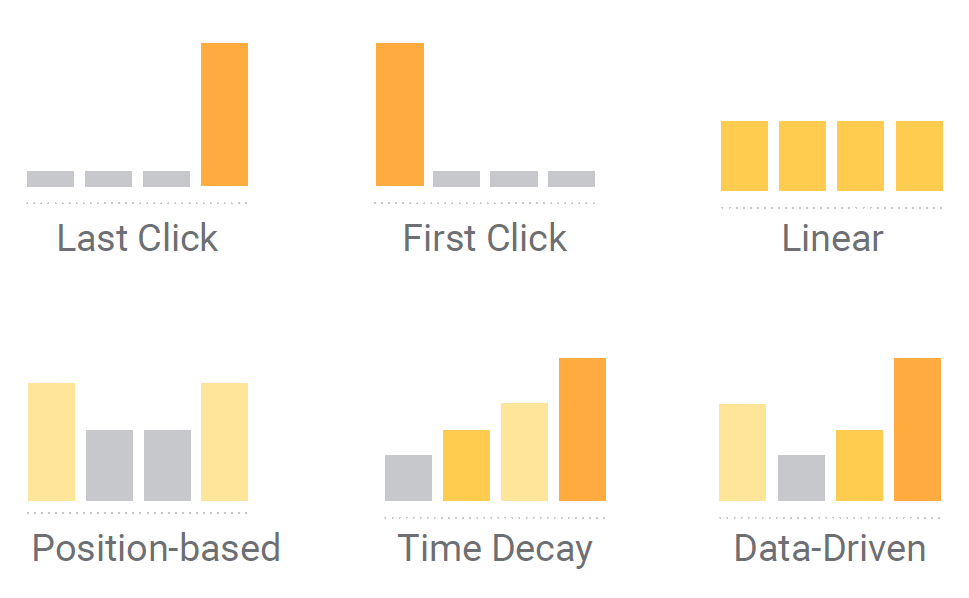
There’s No Such Thing As Perfect Attribution
You’re scrolling through Instagram when a sponsored post catches your eye.
It’s from an online store showcasing a new product you find interesting. You click on the ad, land on the website, and browse through a few products but don’t make a purchase.
A few days later, you search for a similar product category on Google. Thanks to the store’s SEO efforts, their website ranks high in the search results. You click on the link again, spending more time exploring different products and reading reviews.
Over the next few weeks, you follow the brand on Instagram, engaging with their posts, like a few images, and even comment on a product photo.
The store’s SEO strategy ensures that more informative blog posts and product pages are easily discoverable on search engines, which you read during your research.
Finally, after a month of intermittent interactions, you receive a retargeted ad on Facebook showcasing a limited-time discount on the product you’re interested in. This ad prompts you to make a purchase.
Which channel gets the credit for this purchase?
Understanding Attribution in Digital Marketing
This scenario highlights the complexity of consumer behaviour and the challenge of accurately attributing each touchpoint’s influence on the final conversion.
Modern tracking methods provide us with a wealth of information about where money has been spent and the results achieved.
Despite the largely unnecessary push from certain advocates for increased privacy levels, these methods still offer great insights. However, unfortunately, perfect attribution is a myth, especially in a landscape influenced by stringent privacy regulations.

Make no mistake, digital channels remain the most trackable and accountable way to allocate your advertising budget.
Yet, achieving perfect attribution in digital marketing is complex and, some argue, unattainable, even with technological advancements.
I would argue that it’s impossible.
Significant strides have been made, but various challenges continue to hinder the ability to attribute conversions to specific marketing efforts accurately. While your spending is still very accountable, don’t expect reporting to be perfect.
Multichannel Complexity
We all know that consumers engage with brands through various channels such as social media, search engines, email, display ads, content marketing, and offline interactions like TV ads and in-store visits.
Let’s now take that for granted I won’t bore you further with how people behave. Here I am more interested in what we do with how they behave.
Each touchpoint can potentially play a crucial role in the consumer’s decision-making process, influencing their perception of the brand and guiding them towards making a purchase.
For example, the journey we detailed above began with an Instagram ad, followed by an organic search visit, continued engagement on Instagram, and finally a retargeted Facebook ad. Each interaction, whether online or offline, contributes to the consumer’s overall journey and decision-making process.
Accurately tracking and attributing each interaction to its influence on the final conversion is exceedingly complex. This complexity arises from the need to integrate data from various sources, each with different metrics and attribution models.
Social media platforms may provide data on reach, engagement and conversion rates; search engines offer insights into keyword performance and search behaviour; email marketing tools track open rates, click-through rates, and conversion rates; analytics platforms can monitor user behaviour on websites and content consumption patterns.
Offline interactions add another layer of complexity, requiring methods such as customer surveys, loyalty programs, and point-of-sale data to track.
Consumer behaviour is simply not linear; consumers often interact with multiple touchpoints multiple times before making a purchase.
Advanced attribution models, such as multi-touch attribution and machine learning algorithms or AI, are required to analyse the interplay between different touchpoints and determine their relative contributions to the final conversion.
These models consider various factors, including the order and frequency of interactions, to provide a more accurate picture of the consumer’s journey.
Attribution Models
There are several attribution models used in digital marketing, each with its methodology and implications for understanding consumer behaviour.
Single-Touch Attribution (STA): Models like first-click or last-click attribution assign all credit to a single touchpoint. First-click attribution (a decent option, since it might indicate where someone first heard of you) gives all credit to the initial interaction, while last-click attribution assigns it to the final interaction before conversion. These models are straightforward to implement but often criticised for their simplicity. And to be fair, they can often overlook the complex and multifaceted nature of the customer journey, ignoring contributions from other touchpoints.
Multi-Touch Attribution (MTA): I like this one. This approach distributes credit across multiple touchpoints that a consumer interacts with before making a purchase. It acknowledges that consumers engage with a brand through various channels, each playing a role in their decision-making process. MTA models aim to capture this complexity by assigning a portion of the credit to each interaction based on its perceived influence on the conversion. However, determining the correct weight for each touchpoint can be subjective and varies by model. Different MTA models, such as linear attribution, time decay attribution, data-driven attribution, and position-based attribution, each have their own methods for weighting interactions.
Challenges of Attribution Models
Each of these models offers a different perspective on the consumer journey and can yield varying insights depending on the context and specific marketing strategy being analysed.
Despite their advantages, MTA models are not without challenges. Accurate collection and integration of data from diverse sources is difficult.
Different channels use different metrics and tracking methods, complicating the creation of a cohesive view of the consumer journey. Additionally, the subjective nature of assigning weights to touchpoints means that MTA analysis results can vary significantly depending on the chosen model and its parameters.
This subjectivity can lead to debates within organisations about which model best represents the true impact of each touchpoint.
Moreover, privacy regulations and the increasing use of ad-blocking technologies add further complexity to our attribution efforts.
As consumers become more concerned about their online privacy, tracking their interactions across multiple channels has become more challenging. Marketers need to navigate these constraints while still striving to understand and optimise the customer journey.
Privacy Regulations
Data privacy laws like the General Data Protection Regulation (GDPR) in Europe and the California Consumer Privacy Act (CCPA) in the United States impose strict limitations on how companies can collect, store, and use consumer data.

These regulations often restrict tracking technologies and reduce the amount of data available for attribution analysis.
The move away from third-party cookies, driven by both privacy concerns and browser policies, has further complicated tracking. I understand the need for it to some extent, but it’s a pain in this marketer’s ass. Google have recently reversed their decision to do this in the Chrome browser, however time will tell if this is for sure.
Traditional methods of tracking user behaviour across sites and over time are becoming less effective, pushing marketers to find alternative solutions that often provide less comprehensive data. We are recommending and implementing server-side tracking for our clients to help combat this.
Cross-Device Tracking
Consumers frequently switch between devices throughout their journey. Accurately linking these interactions to a single user across multiple devices is challenging.
Solutions like user login tracking help but are not universally applicable and can miss significant portions of the journey. Techniques such as probabilistic matching and deterministic matching aim to track users across devices by using identifiers like email addresses or phone numbers.
However, these methods are not foolproof and often face limitations in accuracy and scope.
Data Silos
Major platforms such as Google, Meta and TikTok have their own ecosystems and attribution models, leading to data silos. Each platform reports on its own performance, often without full visibility into how its data integrates with others.
Very often digital agencies will report on just one channel if this is all that we are engaged for, however in Friday’s case we look at your website performance holistically where possible in order to understand the impact of our digital marketing work.
A fragmented view complicates the creation of a cohesive, holistic attribution model. Integrating data from multiple sources (CRM systems, ad platforms, web analytics) into a unified system requires significant technical expertise and resources.
Discrepancies in data formats, definitions, and metrics further complicate this process.
Data silos can still inform your ROI though, so do not discount the data that they provide.
Last-Click Bias
Last-click attribution is still widely used due to its simplicity. However, it inherently attributes all credit to the final touchpoint before conversion, ignoring the influence of all previous interactions.
This leads to an oversimplified understanding of what drives conversions and can lead to misallocated marketing spend.
Many valuable touchpoints that assist in moving a consumer down the funnel – such as informational content, social media engagements, or email nurturing – are undervalued or ignored entirely in last-click models.

Offline Conversions
Attributing online marketing efforts to offline sales (e.g., in-store purchases) is particularly challenging. Despite technologies like point-of-sale (POS) systems, loyalty programs, and CRM systems that attempt to bridge this gap, accurately matching online interactions to offline actions remains a significant hurdle.
Strategies to track online-to-offline conversions include unique discount codes, loyalty programs, and geo-fencing. While these methods provide some insights, they often fall short of capturing the full picture.
Model Limitations
While MTA aims to distribute credit across all touchpoints, it relies heavily on the specific model chosen (linear, time decay, position-based, etc.), each with its assumptions and biases. These models require extensive historical data and sophisticated analytics capabilities.
Data-driven attribution (DDA) models use machine learning to dynamically assign credit based on actual performance data. While more accurate than rule-based models, DDA requires vast amounts of data and advanced analytical infrastructure, making it less accessible to smaller businesses.
Marketing Mix Modelling (MMM) looks at aggregate data to determine the impact of various marketing activities over time. It’s useful for strategic planning but less effective for real-time or tactical attribution due to its reliance on historical data and broader timeframes.
Evolving Consumer Behaviour
Consumer behaviour is influenced by various factors, including economic conditions, technological advancements, and cultural trends. These changes necessitate continuous updates and recalibrations of attribution models, which can lag behind actual behaviour changes.
Emerging technologies such as voice search, AI-driven recommendations, and augmented reality introduce new touchpoints and interactions that existing models might not account for, further complicating the attribution process.
So What Does All Of This Mean?
Despite these challenges, digital marketing analytics continues to provide critical insights into campaign effectiveness and consumer engagement.
Marketers can still leverage first-party data, aggregated data, and advanced analytics techniques to gauge performance. However, with fewer cookies available for precise tracking, there is a greater reliance on inferred data and broader trends rather than granular, user-specific information.
This makes it essential for marketers to adopt a more holistic approach, combining multiple data sources and qualitative insights to build a more accurate picture of their audience’s behaviour.
While the data obtained might not offer the same level of detail as before, it still plays a crucial role in informing strategy and measuring the impact of marketing efforts.
While perfect attribution in digital marketing is not fully achievable, ongoing advancements in technology and methodology can bring marketers closer to understanding the true impact of their efforts, enabling better decision-making and optimisation of marketing strategies.
Not much is lost, if you ask me. This shift might actually further enhance the quality and focus of digital marketing efforts.
Perfect attribution is a myth, but if you want to paint the best attribution picture you can get then get in touch with Friday.

